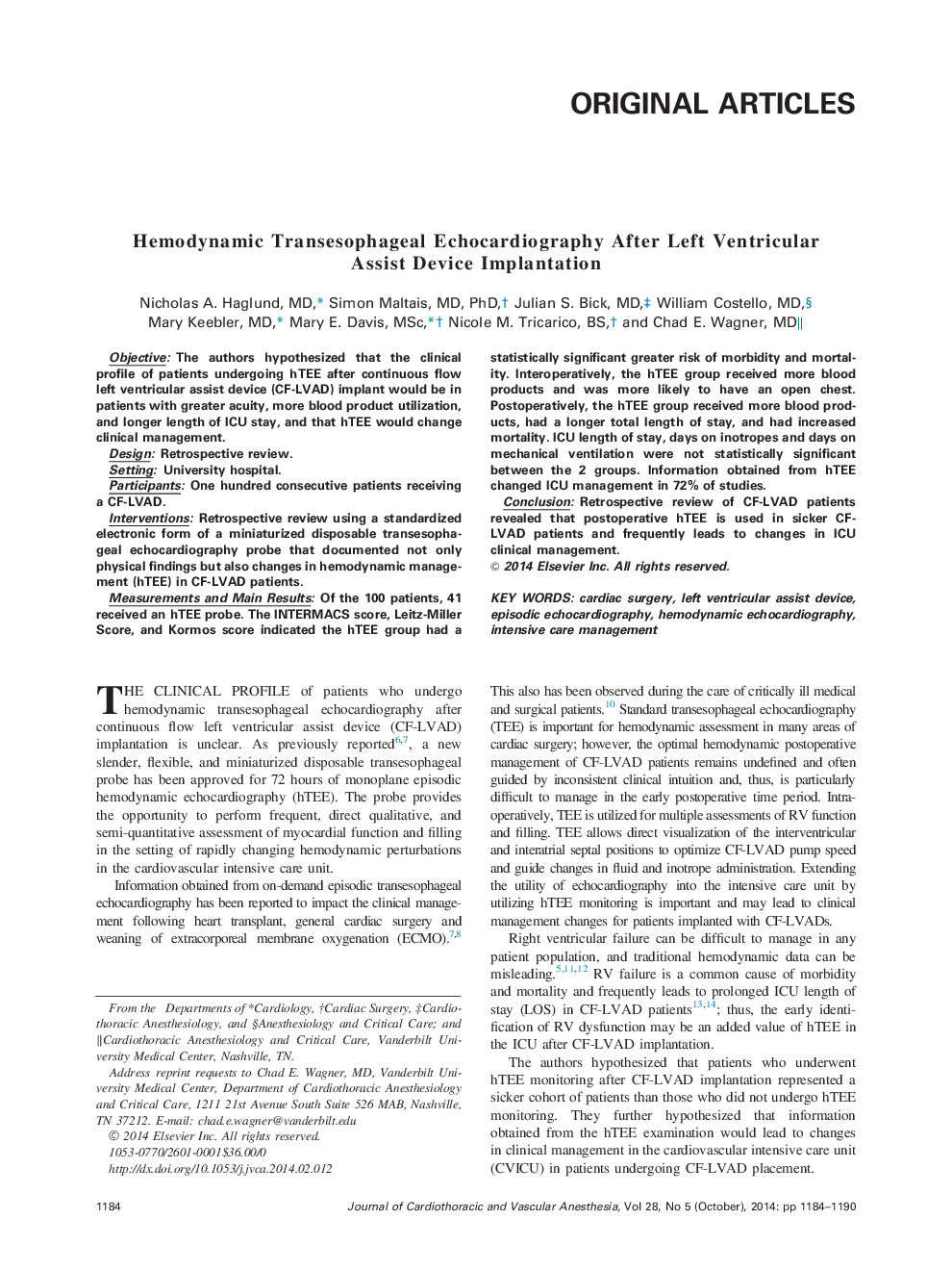| کد مقاله | کد نشریه | سال انتشار | مقاله انگلیسی | نسخه تمام متن |
|---|---|---|---|---|
| 2759648 | 1150158 | 2014 | 7 صفحه PDF | دانلود رایگان |
ObjectiveThe authors hypothesized that the clinical profile of patients undergoing hTEE after continuous flow left ventricular assist device (CF-LVAD) implant would be in patients with greater acuity, more blood product utilization, and longer length of ICU stay, and that hTEE would change clinical management.DesignRetrospective review.SettingUniversity hospital.ParticipantsOne hundred consecutive patients receiving a CF-LVAD.InterventionsRetrospective review using a standardized electronic form of a miniaturized disposable transesophageal echocardiography probe that documented not only physical findings but also changes in hemodynamic management (hTEE) in CF-LVAD patients.Measurements and Main ResultsOf the 100 patients, 41 received an hTEE probe. The INTERMACS score, Leitz-Miller Score, and Kormos score indicated the hTEE group had a statistically significant greater risk of morbidity and mortality. Interoperatively, the hTEE group received more blood products and was more likely to have an open chest. Postoperatively, the hTEE group received more blood products, had a longer total length of stay, and had increased mortality. ICU length of stay, days on inotropes and days on mechanical ventilation were not statistically significant between the 2 groups. Information obtained from hTEE changed ICU management in 72% of studies.ConclusionRetrospective review of CF-LVAD patients revealed that postoperative hTEE is used in sicker CF-LVAD patients and frequently leads to changes in ICU clinical management.
Journal: Journal of Cardiothoracic and Vascular Anesthesia - Volume 28, Issue 5, October 2014, Pages 1184–1190
